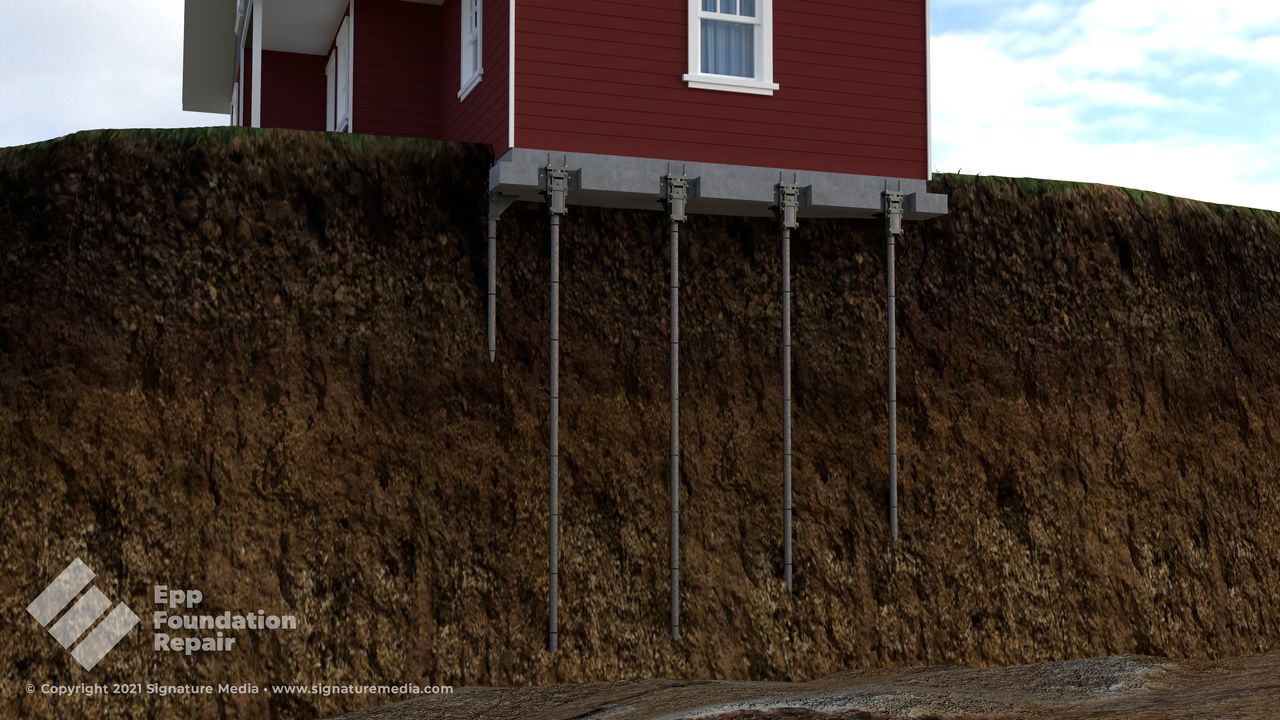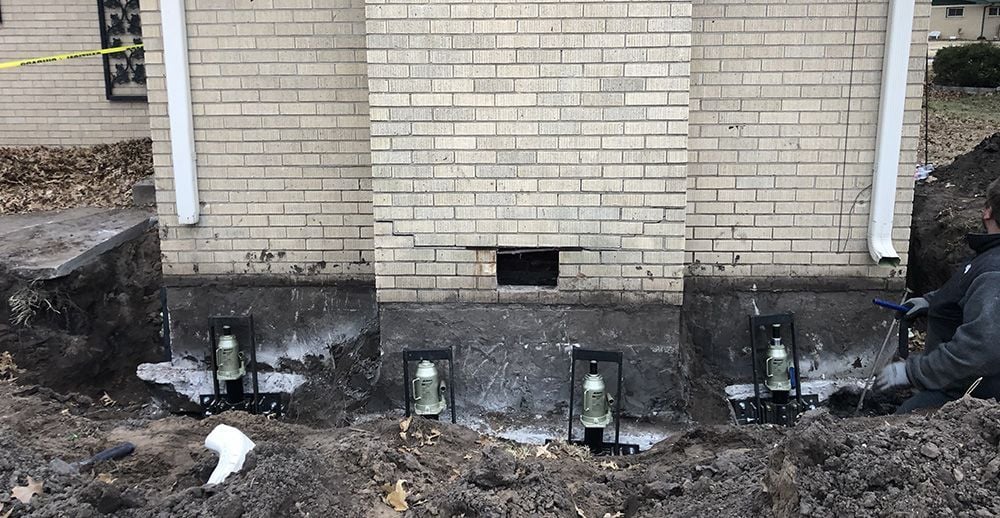Browsing Your Alternatives for Foundation Repair Oklahoma City: A Homeowner's Manual
Checking Out Different Techniques of Structure Repair Work for Different Dirt Kinds
Structure repair is an essential facet of preserving architectural stability, especially when considering the varied challenges posed by various dirt kinds. The intricacy of soil behavior under varying problems necessitates a customized method to fix, making certain optimum services such as helical piers for unpredictable dirts or chemical cements for cohesive layers. The question remains: just how do we figure out the most effective method for each special scenario? Comprehending the interaction between dirt characteristics and fixing strategies is critical, yet there is even more to reveal in the pursuit for lasting solutions. What elements really dictate the choice of technique?
Understanding Soil Kinds
Soil kinds play a critical function in the security and long life of structure foundations, making it important for home owners and construction experts to understand their features and habits. The interaction in between dirt and foundation can establish the structural integrity of a structure. There are a number of soil kinds, each with unique physical residential properties that influence just how structures are made and maintained.
Granular soils, such as sand and crushed rock, offer great drain and are frequently taken into consideration stable. In contrast, cohesive dirts like clays and silts display various habits.
Rocky soils, understood for their stamina and stability, deal excellent assistance for foundations yet might call for specific tools for excavation. Conversely, loamy dirts, which are a well balanced blend of sand, clay, and silt, commonly provide desirable conditions for structure assistance due to their modest drainage residential or commercial properties.

Comprehending these dirt types is crucial for selecting ideal foundation repair service methods, making sure the longevity and safety and security of frameworks with time.
Obstacles With Expansive Clay
Among the various soil kinds, large clay presents special challenges for structure stability due to its tendency to undergo significant quantity changes with dampness variation. This kind of dirt swells when wet and agreements when dry, which can put in significant pressure on structures. These variations can result in structure fracturing, heaving, and settlement concerns, presenting substantial risks to the architectural stability of structures.
The difficulties with expansive clay are aggravated by its plasticity index, which measures the dirt's capacity to transform form and quantity. A high plasticity index suggests better possibility for motion, enhancing the likelihood of damages to foundations. This is specifically troublesome in regions experiencing constant or severe climate changes, where cycles of wet and dry problems are common.
In addition, the deepness of extensive clay layers can vary, complicating the assessment and planning of ideal foundation repair work techniques. The unpredictable nature of its motion requires specialized design remedies to reduce threats. Furthermore, large clay can impact utility lines, walkways, and driveways, even more making complex repair work efforts. These complexities need a complete geotechnical examination to guarantee effective structure repair work approaches are implemented, highlighting the significance of resolving large clay difficulties with experience and treatment.
Solutions for Sandy Soils
Sandy soils, identified by their huge particle dimension and reduced cohesion, existing unique difficulties for structure stability due to their tendency for shifting and erosion. By securing the structure to deeper, a lot more steady soil layers, these systems can provide the required support to combat the changing nature of sandy soils.
Another suggested technique is the application of soil stabilization methods. Chemical grouting, as an example, entails injecting a stabilizing agent right into the dirt, which improves cohesion and minimizes permeability. This procedure helps to solidify the sandy substrate, thereby decreasing the risk of erosion and movement.
Additionally, setting up correct drain systems is crucial in sandy soil conditions. Ensuring ample drainage can stop water accumulation around the foundation, which frequently aggravates erosion and soil displacement. Strategies such as French drains pipes or surface area grading can be employed to direct water away from the structure perimeter.
Addressing Clearing Up in Loamy Soils
Fertile soils, known for browse around here their well balanced mix of silt, sand, and clay, offer a productive base for several structures but can often cause foundation settling because of their special make-up. This balanced structure gives superb drainage and nutrient retention, making it suitable for farming and landscaping. This very same quality can end up being bothersome for foundations, as changes in moisture content can trigger the soil to expand or contract, leading to working out.
Precise soil screening is crucial to determine the details structure and moisture material of the loam. When data is collected, applying correct drainage services is important to keep regular moisture degrees, thereby lowering the danger of soil contraction or expansion.

Ingenious Repair Service Strategies
In the realm of structure repair, innovative methods are continually being created to deal with the complicated challenges presented by different dirt problems. As dirt types differ substantially in their structural homes, standard approaches may not always are enough. The introduction of new innovations in foundation repair service provides much more customized remedies, guaranteeing security and durability.
One remarkable innovation is the use of helical piers, which are particularly efficient in unpredictable or extensive dirts (foundation repair okc). These piers are screwed right into the ground till they get to a secure layer of soil, offering solid assistance for the structure over. This approach reduces interruption and is versatile to different soil types, making it a functional option
One more cutting-edge method is the application of polyurethane foam injection. This technique includes injecting high-density polyurethane foam underneath the foundation to fill spaces and maintain the framework. It is a less invasive option to conventional support, using fast installment with marginal disruption to the surrounding location.
Additionally, dirt stablizing approaches, such as making use of chemical cements, have acquired grip. These compounds boost dirt strength and minimize permeability, protecting against future changing. Collectively, these ingenious fixing techniques offer effective options for the varied difficulties postured by varying soil conditions.
Final Thought

Structure fixing is a vital facet of maintaining architectural honesty, specifically when taking into consideration the varied obstacles positioned by various dirt types (foundation repair Oklahoma). The intricacy of dirt habits under differing problems demands a tailored method to repair, ensuring optimum options such as helical piers for unpredictable soils or chemical grouts for cohesive layers. By securing the foundation to much deeper, much more secure soil layers, these systems can offer the essential assistance to counteract the shifting nature of sandy dirts
Foundation repair work requires careful consideration of soil kinds to ensure security and More hints long life. Chemical grouts enhance soil stamina and reduce permeability in natural dirts.